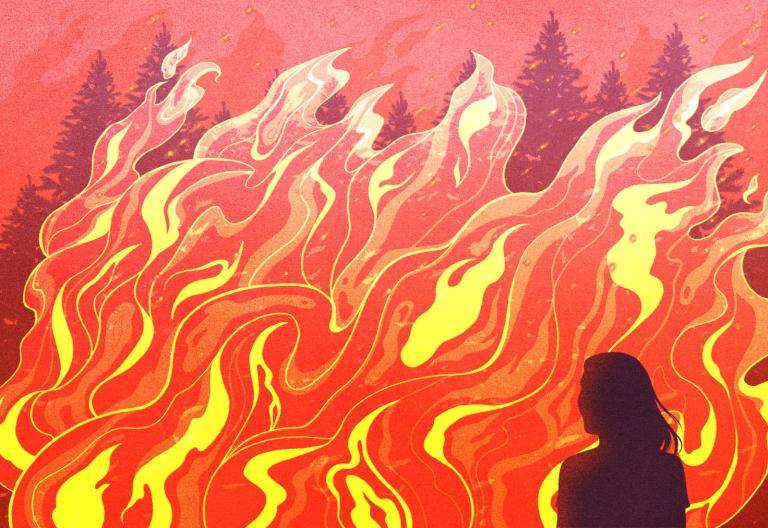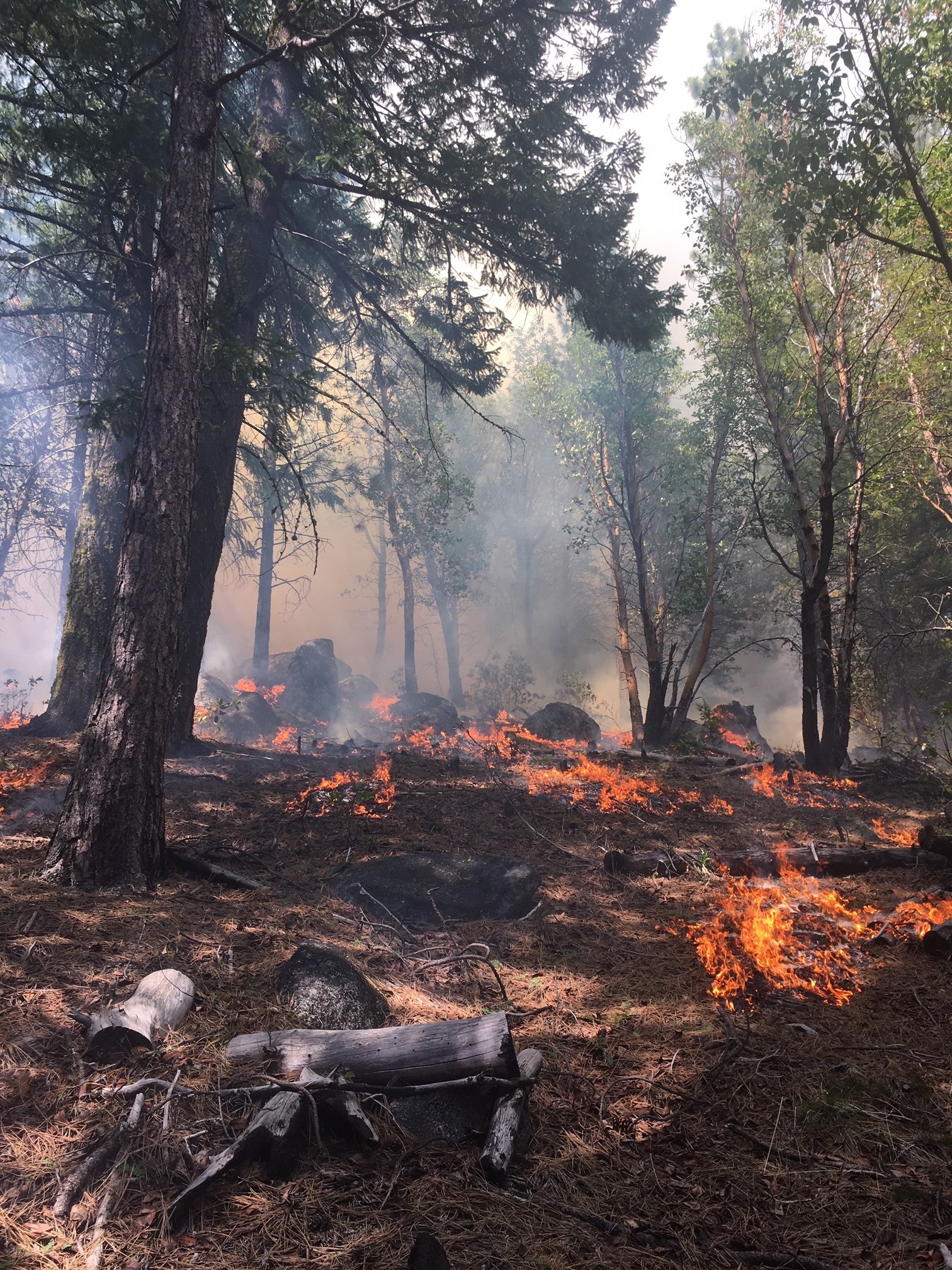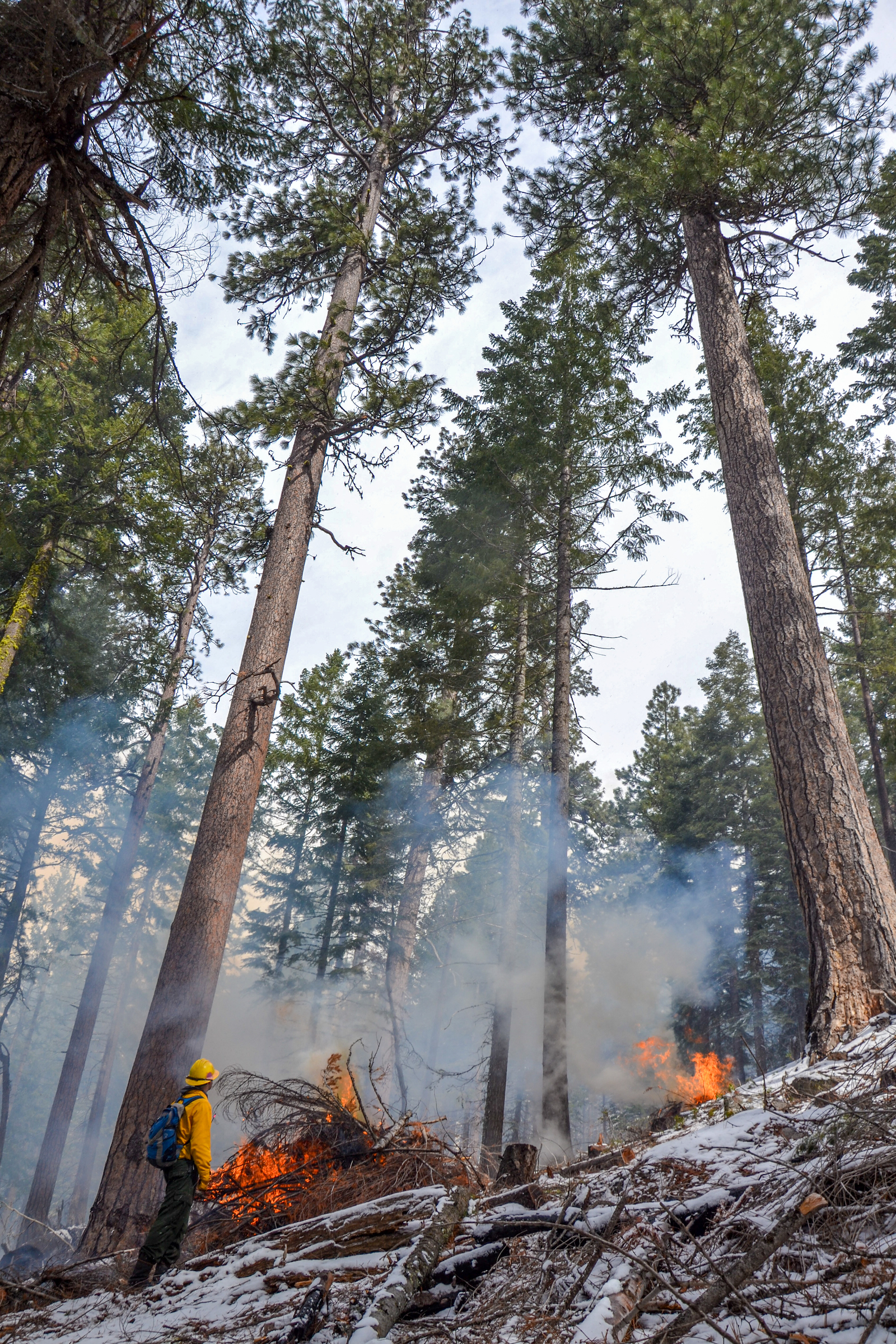They assembled in the parking lot outside the ranger station in Ashland, Oregon. They parked bikes, stepped out of cars, and covertly pulled ski masks over their faces. Then, as one, they ran at the front doors of the building, and before anyone inside could react, they had pushed their way in.
Linda Duffy, the district ranger in charge, happened to be in the front reception area when the masked figures flooded in. She was on her normal morning rounds, greeting staffers once they’d had time to check their messages and drink a cup of coffee. Duffy, then in her early 30s, was one of those earnest Forest Service employees — “nose down, tail up” is how she describes herself — who could tell people without irony that she was from the government and there to help.
The masked figures filled the room shoulder-to-shoulder. Duffy was momentarily terrified. Everyone was talking, loudly, at the same time.
In the next instant, she realized it was up to her to control the situation.
“I’m a fairly small person, but I finally got their attention,” Duffy said, remembering the day of the protest in 1996. “Somehow I got them outside so my employees weren’t so traumatized, and I said, ‘OK — what do you want to tell me?’”
The posse, a group of environmentalists, had a simple message: The Forest Service must not cut down a single tree in Ashland’s watershed. A note left in the doorway of the ranger station hammered home the point. It ended with the words, “Diplomatic channels have been exhausted. Consider yourself warned …”
Duffy remembers asking the crowd, “Are you willing to help? Because this isn’t about cutting trees. We got a serious problem up there.”
For decades, Ashland, located in Jackson County, atop the border with California, had been a booming hub for the logging industry. At its peak, some 15,000 people in the region depended on logging for their livelihoods, said David Schott, of the Southern Oregon Timber Industry Association. And in the early 1950s, the town had nine different timber mills slicing trees into boards.
By 1996, however, the town was best known not for its history of logging, but for its Shakespeare festival and its liberal politics. Only one of those timber mills remained open, and it would close two years later.
Things had started to change in Ashland in the ’60s and ’70s: A new generation of residents saw the forests of the Pacific Northwest not as an industrial resource for exploitation, but a place for recreation and serenity. Throughout the 1980s, activists set up camps to block logging roads, gave speeches outside ranger stations, filed lawsuits, and lobbied politicians — a period known as the Timber Wars. Then, in 1990, environmentalists got the spotted owl on the endangered species list, and shortly thereafter a judge stopped all logging on state and federal land in southeastern Oregon.
The Forest Service — no longer able to conduct the business of managing timber sales as usual — focused instead on building access roads for firefighters and thinning trees deemed a wildfire threat. “It was almost presto-chango,” said Timothy Ingalsbee, executive director of the nonprofit Firefighters United for Safety, Ethics, and Ecology. “All of a sudden the Forest Service, instead of doing timber extraction, was all about tinder reduction.”
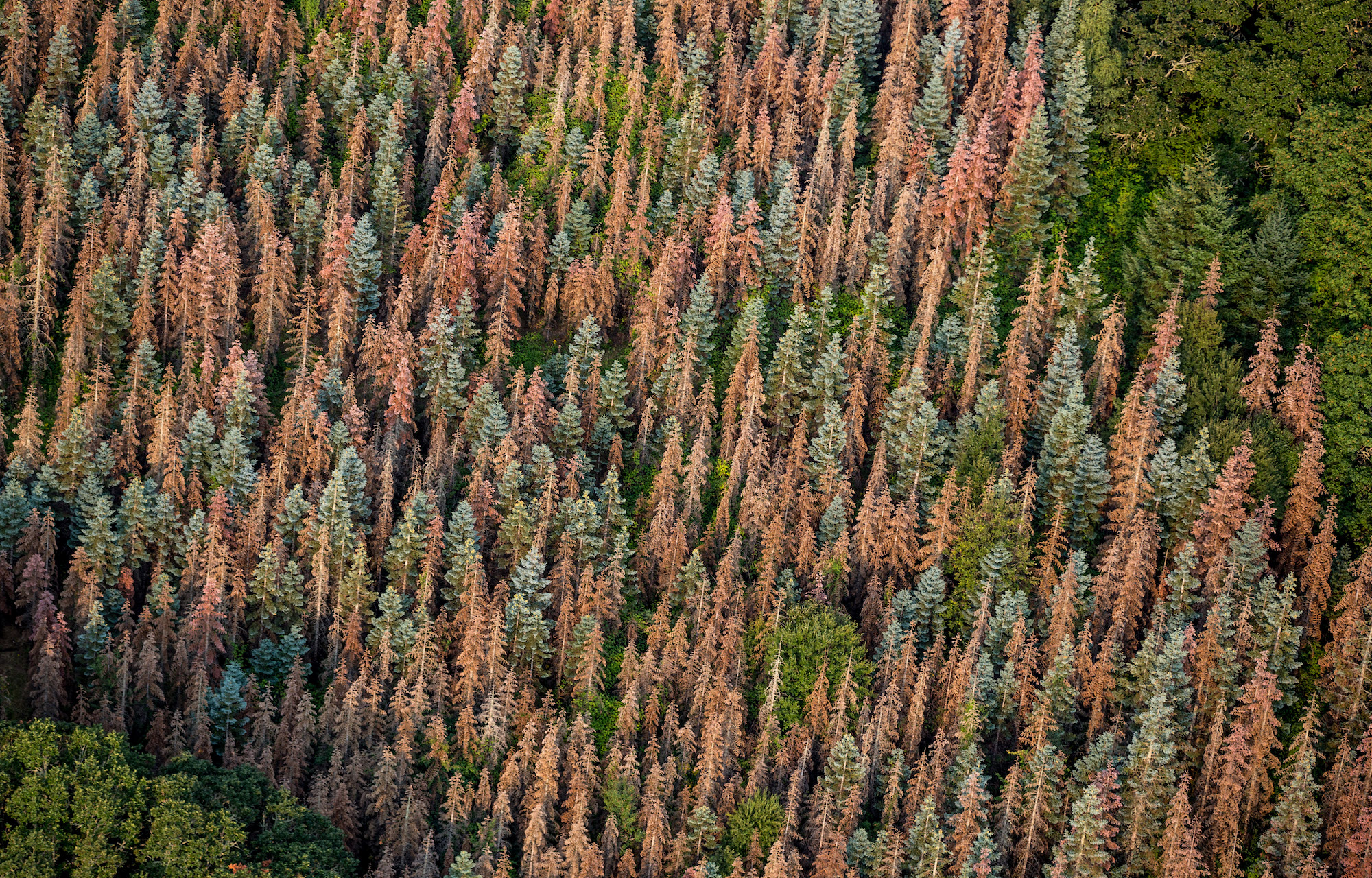
When Linda Duffy arrived at her post in Ashland, she had inherited a proposal to cut new firebreaks — or gaps to slow the spread of wildfires — into the ponderosa pine-covered ridgetops above the town. HazRed, they called it. Activists were convinced this was just another logging operation, thinly cloaked in the language of fire safety.
But the fire danger was real. Ashland residents didn’t have to venture farther than the city hall steps to see the ominous potential for wildfire: The Ashland watershed’s forest begins just across the street from the town center. Marty Main, a private forester who has been helping to manage city lands since 1991, said the foreboding signs were everywhere: Mature trees — competing with each other for moisture in the forest’s overly dense stands — were dying, while shade-loving species were crowding up from below, and the ground was thick with dry needles. It was the classic ladder of fuels that a fire might climb to the treetops.
“I could see that the watershed was in serious trouble,” Main said.
The situation is the same in hundreds of communities across the American West. Forest Service bigwigs, fire chiefs, and governors are scrambling for ways to better manage forests and allow residents to coexist with worsening fire risk. While the techniques for doing that — retain bigger trees, less tightly packed, and perform more prescribed fire on the ground — are well established and clearly supported by science, long-standing conflicts between environmentalists and loggers have kept town after town paralyzed.
But Ashland, a historical hotbed of both the logging industry and environmental activism, has become an unlikely success story. That moment at the ranger station in 1996 was the catalyst for a protracted series of community meetings, patience-stretching failures of communication, multiple compromises, and finally the crystallization of trust and understanding between groups that long thought they would never be able to work together.
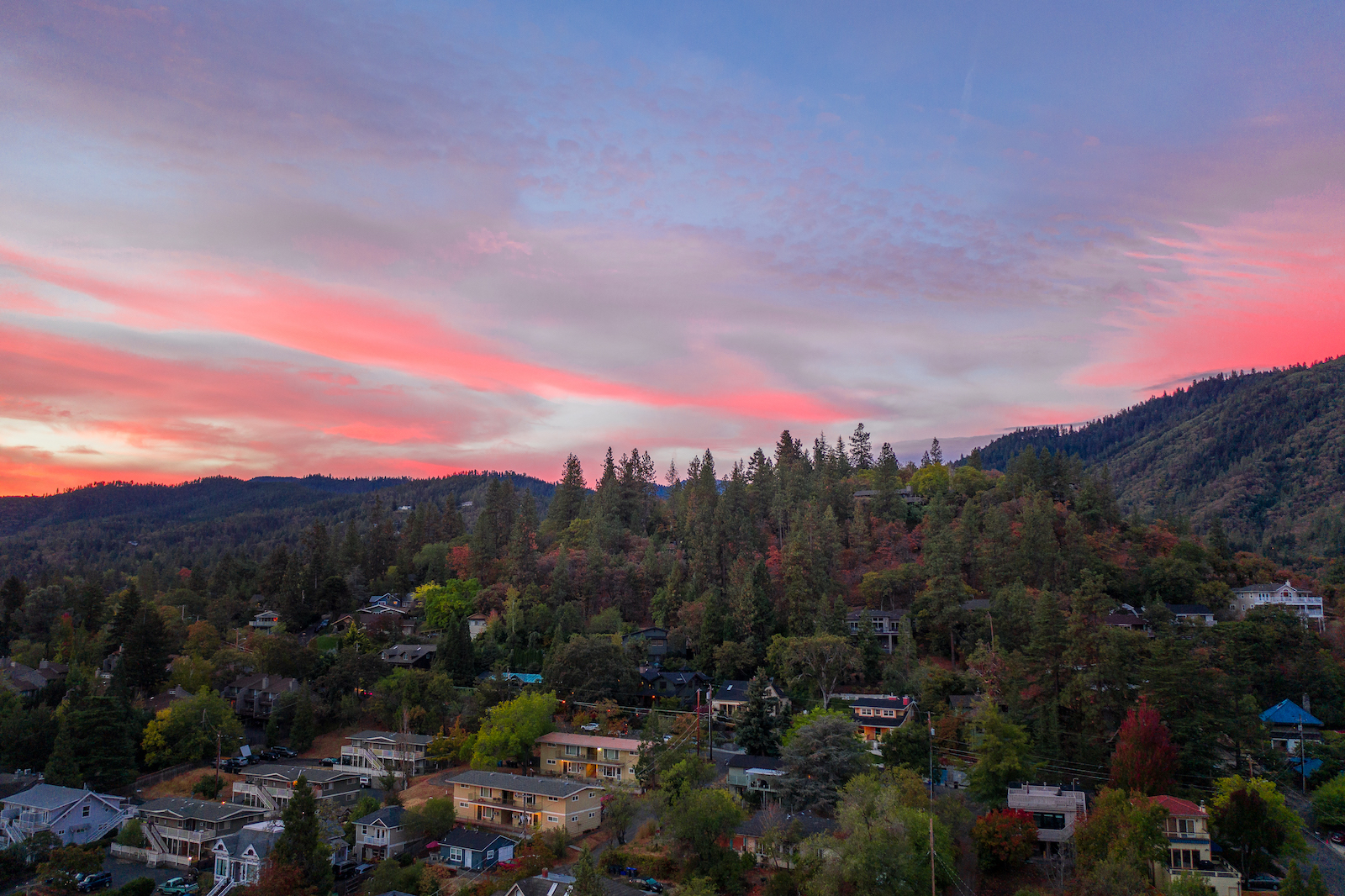
In 2004, the city began its first major thinning project. Because the forest runs right into Ashland’s core, there was no way to hide the felling. Dozens of logging trucks, heavy with trees, pulled through the city’s narrow downtown commercial district.
Don Boucher, a lifelong Forest Service employee, said he talked with one of the truck drivers who had driven logs through town a decade and a half earlier. “It was amazing to see people waving with all five fingers this time,” Boucher remembers him saying.
This community — where the line between forest and city is blurred, located in a county with one of the highest occurrences of wildfire in Oregon — has become a model for finessing the politics of forest management in a changing climate.
“If you can do it here,” Main said, “you can do it anywhere.”

Fire seasons have gotten scary in the West over the past decade. Back in the 1980s, maybe 2 million acres would burn in an average year, 5 million in a crazy season. Now, the amount of land charred each year bounces between 5 million and 10 million acres.
It’s not like we stopped putting out wildfires: Suppression costs rose tenfold in the last 40 years — most dramatically in the last decade — and taxpayers now shell out more than $2 billion a year for wildland firefighting. The homes and other property that wildfires destroyed in 2017 and 2018 alone were worth over $40 billion. And then, of course, there are the carbon emissions, and the long-term health implications of all those tiny, lung-scouring particles billowing up into the air.
Liberals tend to blame climate change for this explosion of flames, while conservatives blame environmentalists for blocking logging. But the history of forest mismanagement starts long before either side’s point of view calcified.
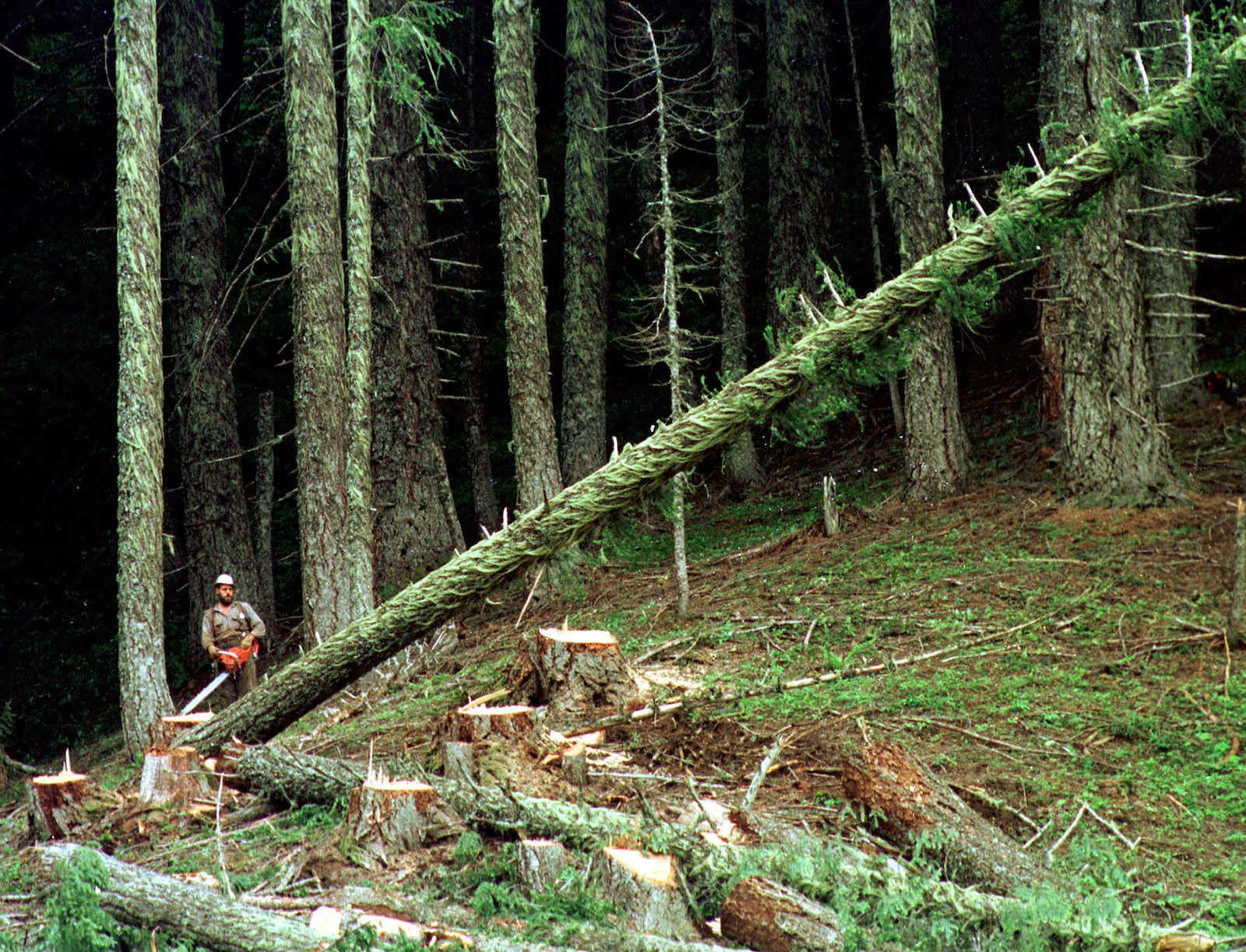
Fires were frequent but relatively mild in the dry forests of the West in the era before the American conquest. Native Americans used fire as a tool to keep forests open — trees spaced to allow meadows for deer and other game — from the end of the last ice age up until the 1800s, when settlers (forcibly) took the land. When Theodore Roosevelt established the Forest Service in 1905 and took control of 172 million acres as public property, the agency made fire suppression its priority, aiming to have every new blaze out by 10 a.m.
Without fires, shade-loving firs grew between western forests’ ponderosa and sugar pines, dramatically increasing the number of trees per acre. Wildfires swelled in these denser forests: Instead of passing along the ground and clearing out the smaller growth, fire was more likely to leap to the treetops and leave nothing behind but charred trunks.
As the climate began to warm, the blankets of winter snow melted away sooner, and seasonal creeks went dry earlier. By the 1990s, in some places there were as many as 20 trees competing for the same scarce water where just one tree might have stood before the advent of European-style forest management — aggressive fire suppression and dense replanting to maximize timber production. The parched forests became susceptible to pests. When beetles chewed into the living tissue beneath pine bark, the trees were too depleted to repel the invaders, too dry to drown the burrows in sap. Instead, they succumbed, dying by the millions.
This was the state of Ashland’s watershed when Duffy stood listening to the environmental activists in the ranger station parking lot. It was crowded, and vulnerable to drought, beetles, and fire.
If you are looking for the recipe for an inferno, start with a dense forest where tree branches intertwine above and a foot of dry needles pads the ground below. Add historically high temperatures, then sit back and wait for lightning, a poorly maintained electrical line, or some lummox with a terrible idea for a gender reveal.
Darren Borgias, a conservationist who worked with The Nature Conservancy to map the biodiversity of the Klamath Mountains of California and Oregon in the early 2000s, said that his team could see the rising danger of wildfire in its data. “We had recognized that logging, as it had been constrained, was no longer the greatest threat to the forest, but what we called ‘uncharacteristically severe fire,'” he said.

Linda Duffy was an unusual Forest Service employee. She had no educational background in forestry, biology, or fire science. Her focus in college had been on human behavior. And so, when anti-logging protesters promised to stop the HazRed project — 1,631 acres of commercial logging, cutting, and pile burning to establish ridgeline firebreaks deep in the watershed — she didn’t try to solve it with science or better technical solutions. Instead, she became curious about the protesters themselves. What did it mean, she asked herself, that they’d decided that the best way to communicate with the Forest Service was to shove their way into her ranger station wearing ski masks?
“This isn’t how it should be in managing public lands — lands that belong to them as much as any of us,” Duffy remembers thinking.
She got in touch with Robert Brothers, better known as “Bobcat,” a leader of the local conservation group Headwaters. He had had experience mediating between warring factions. Bobcat has a long wizard-like beard and uniformly replaces the word “service” with “circus” when talking about the Forest Service. He told Duffy he’d talk with her on the banks of Ashland Creek.
“It’s a basic negotiating tactic — you meet on your terms,” Brothers told Grist. “It turned out we had different ideas, but we both wanted what was best for the forest. That established a personal trust.”
Brothers then agreed to set up a meeting where Duffy could sit down with some of the leaders of the ranger station protest. At that gathering, Duffy again asked for help. She said she genuinely believed the protesters could offer fresh ideas, science, and resources that the Forest Service could not access on its own.
Many of the activists, some of whom were veterans of the Pacific Northwest’s Timber Wars, rejected any possibility of collaboration. They simply didn’t believe Duffy when she said the watershed required human intervention. They wanted to stop the Forest Service, not help it. But a few of the environmentalists saw some potential in this offer, and began to come to regular meetings that Brothers and Duffy convened, which also brought in representatives from the timber industry and the city.
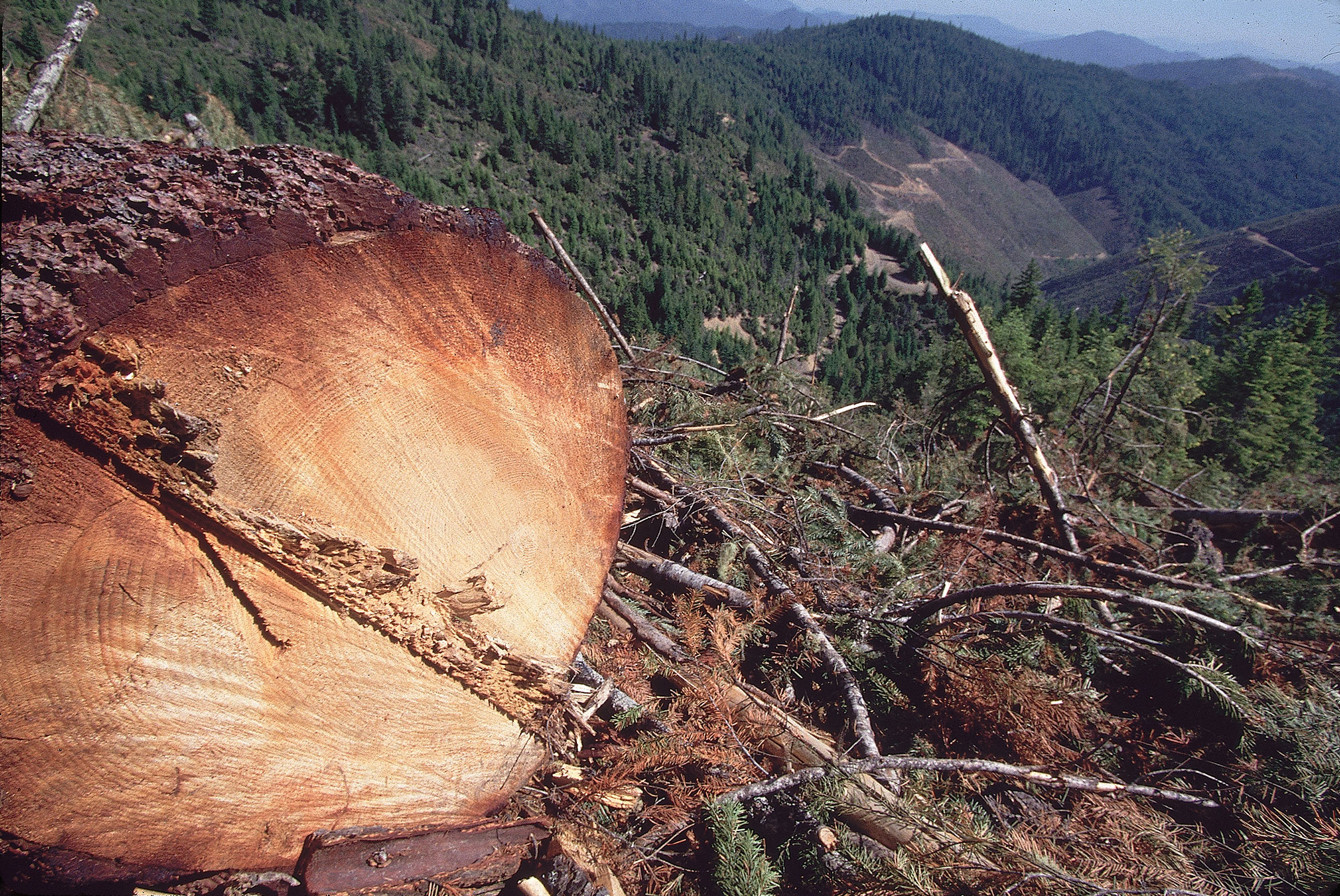
In the following months, Duffy had members of her forestry staff walk through the Ashland watershed with her and the environmentalists, to look at each tree marked for cutting and determine if it really contributed to the fire hazard. Mike Beasley, a young National Park Service employee working on then-cutting-edge experiments to allow fire back into forests, went on one of these walks and pointed out that the Forest Service had marked a lot of big trees for removal. These trees, with their high branches and thick, fire-resistant bark, were the least likely to fuel a catastrophic wildfire. Duffy agreed: Thousands of these trees should remain standing, she said.
Some of her staffers began to grumble, “They said, ‘We know that you aren’t a timber person, do you get that we need to sell some trees to pay for this?’” Duffy recalled.
That had always been the model, said Don Boucher, a Forest Service lifer working in Ashland at the time: The agency used timber sales to finance the infrastructure for firefighting. A clear cut would pay for a section of fire road. The sale of some big trees would pay for the cutting of smaller trees and brush removal to form a fire break.
If people within the Forest Service were skeptical of what Duffy was doing, environmentalists who’d refused to work with her were even more so. Though they’d won concessions, many environmental groups still believed that the HazRed project was a maneuver to circumvent legal barriers to logging. If the project went through, they feared, it would become a model for the Forest Service to greenlight timber sales in the name of fire safety. When the Forest Service issued its final Environmental Assessment for the project in 1998, no less than six environmental groups appealed to stop the felling.
Duffy decided to pull the plug on HazRed, and start over on a new version called the Ashland Watershed Protection Project. This time, the community, rather than the Forest Service, would take control of the process. The City of Ashland again sent representatives who tended to agree with the environmentalists, but they commanded more leverage: The city, because it relied on the watershed for its drinking water, had negotiated an agreement in 1929 giving it a say in the land’s management.
Still, Duffy drew complaints from her colleagues: She was wasting agency resources on endless community meetings that never led to action. She was so focused on listening to the activists that she was not listening to her own experts. At some point, they said, you had to stop straining for consensus and simply do what needed to be done. In June 2000, her boss, Mike Lunn, the supervisor of the Rogue River-Siskiyou National Forest, called her into his office and told her she was being reassigned to an entirely different government branch due to her incompetent management style.
A backlash ensued. The environmentalists and community groups that had been working with Duffy so closely were furious. “It felt like a betrayal,” said Jay Lininger, who was working for the environmental group Klamath Siskiyou Wild at the time. People called the higher-ups in the Forest Service chain of command. They called their political representatives. Both of Oregon’s sitting U.S. senators wrote letters objecting to Duffy’s dismissal.
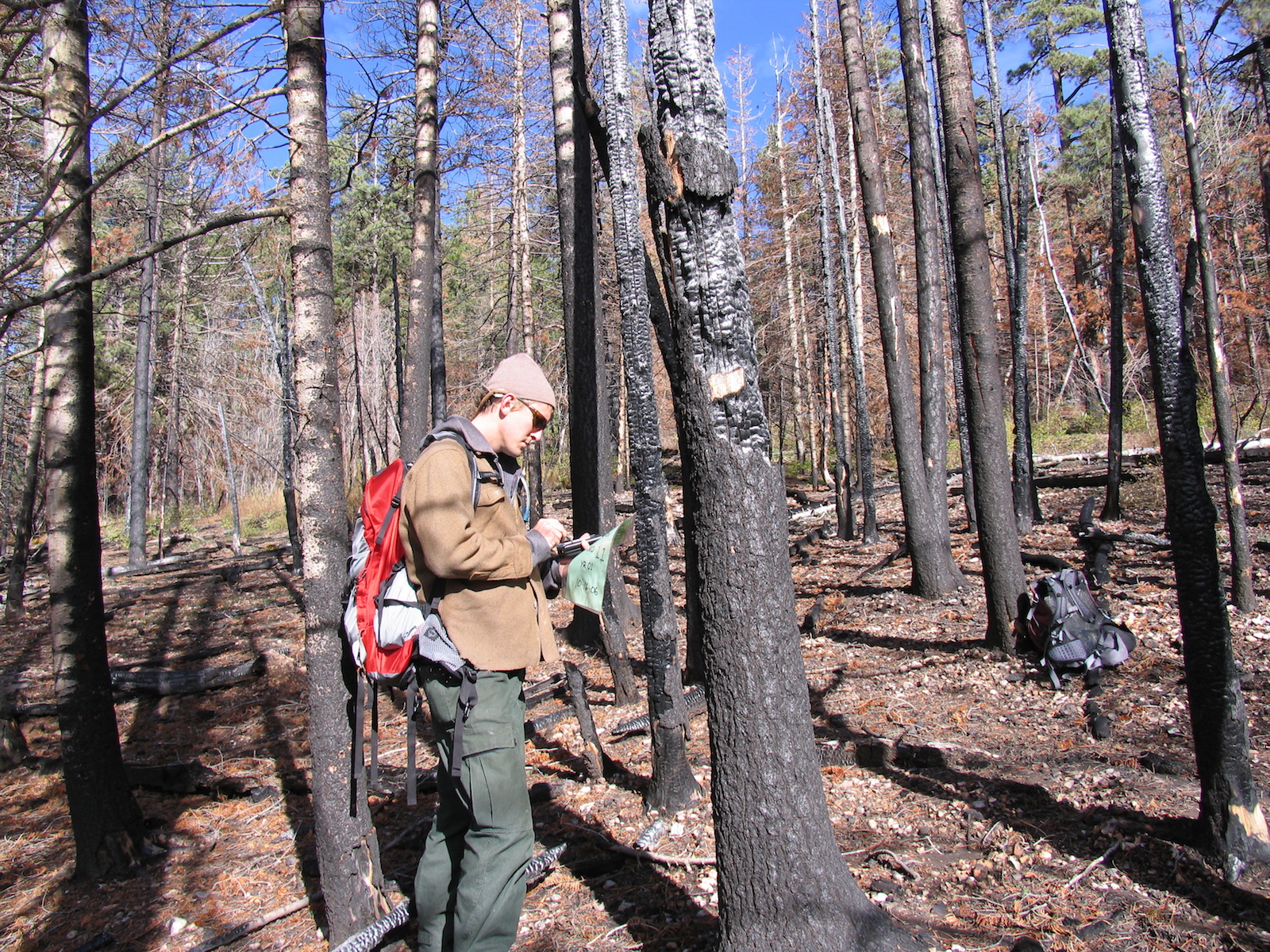
The political pressure must have worked. A few days later Duffy got a call from her boss’s boss, who asked for her side of the story, and then restored Duffy to her position. Lunn retired.
After another year of meetings and paperwork, the Forest Service approved the Ashland Watershed Protection Project. Environmentalists who had once thought that the notion of cutting down trees to reduce wildfire damage was simply a Trojan horse for loggers had engaged deeply with the evidence suggesting that human intervention could make the watershed resilient to fire. They had devised a plan of action they believed in. The doubters who had claimed that the environmentalists were obstructionists who would never agree to any real management watched in amazement as workers began cutting down trees.
This first effort only covered 1,500 acres of the 15,000-acre Ashland Creek Watershed. The Forest Service quickly doubled down with a proposal to repeat the process and devise a long-term plan for the area as a whole. It would become today’s Ashland Forest Resiliency Stewardship Project.
The plan would return key sections of the forest to something more like the landscape that existed under Native American management. That meant a big initial push — sending in crews with chainsaws to clear brush and cut down trees where they grew thick enough to burn hot — followed by regular maintenance burns. Members of the community who had thought the forest would be better off without human intervention were influenced by fire experts from local tribes, said Belinda Brown, a member of the Kosealekte Band of the Ajumawi-Atsuge Nation in Northern California and the tribal partnerships director for the Lomakatsi Restoration Project, one of the partners now managing the watershed.
Ashland community leaders hoped to create a forest resilient to fire — that would burn cool and mild, leaving plenty of living trees to hold the soil in place and keep the city reservoir from filling up with eroding gravel. And they hoped to create areas where firefighters could stop a dangerous blaze before it reached the town.
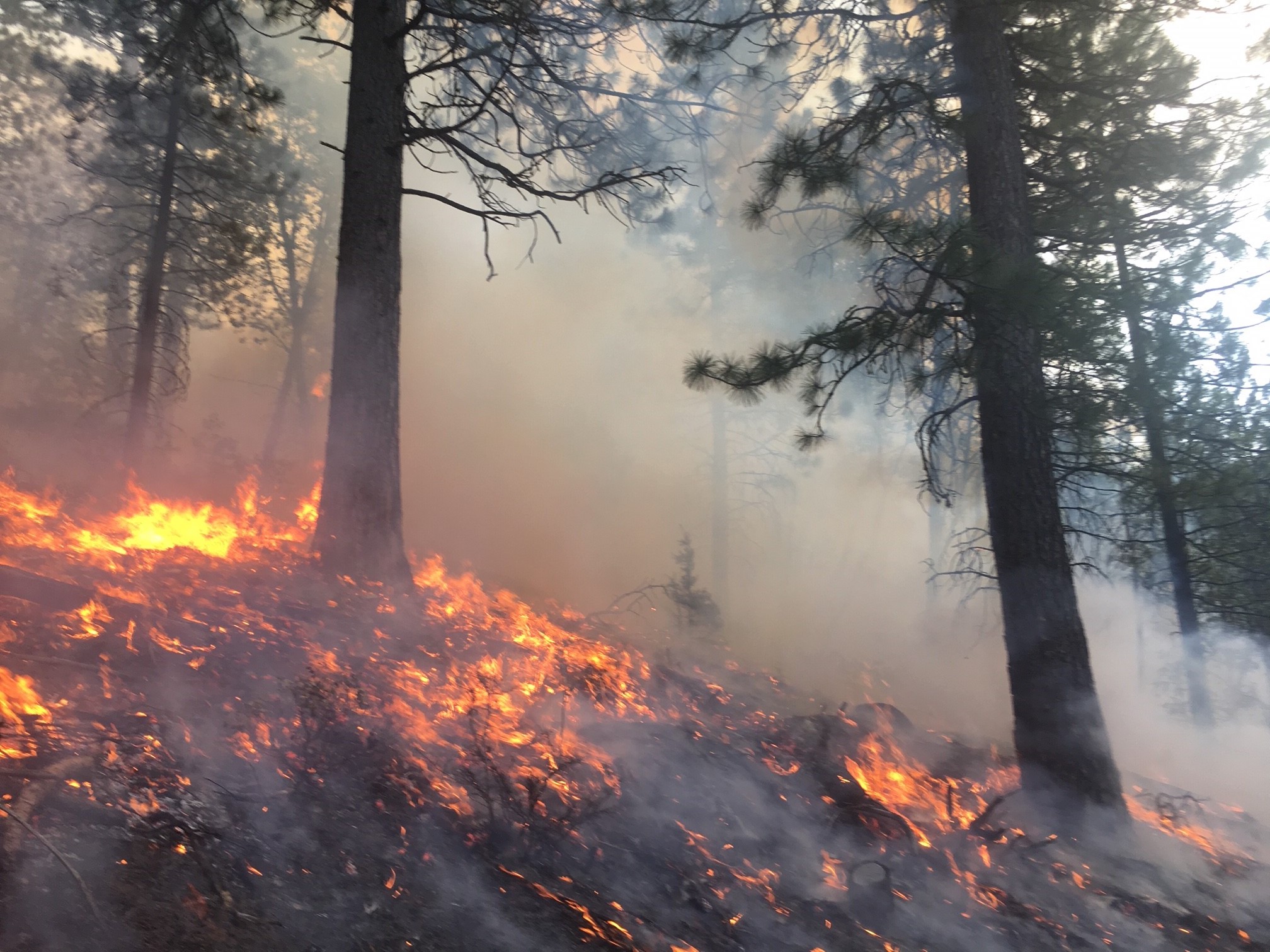
Ashland’s environmentalists, who had been participating in the process for over a decade, were now on board. But how would the rest of Ashland’s residents feel? The plan would impact the forests through which locals rode mountain bikes, or hiked from town. And city leaders suspected that many residents would intuitively recoil from the idea of felling trees.
So Main, the private forester who was a core member of the community team designing the plan, extended an open-ended invitation to local residents and business owners: If anyone objected to the removal of any single tree, Main would visit that tree with them and reconsider the options. The city organized dozens of tours to show residents what they planned to do and why. Boucher from the Forest Service would often come along on these tours to help answer questions. On one, he remembers a white guy with dreadlocks — someone Boucher suspected might object to the idea of felling trees — who stayed at the back, remaining quiet. At the end of the tour he piped up: “‘People are saying you are up here cutting down the big trees and damaging the forest,’” Boucher recalled. “‘I’m going to tell them they are full of crap.’”
In 2004, with the residents on board with the painstakingly negotiated forest management plan, helicopters lifted logs out of a steep ravine in Lithia Park — known to some as Ashland’s crown jewel — which follows a creek from the edge of town to a downtown plaza.
“There were literally logs flying over downtown Ashland,” said Chris Chambers, the city’s wildfire division chief. “I thought, ‘Wow, we’ve really come a long way.’”

When the Ashland community partners came to the consensus that they’d need to remove a lot of trees to accomplish their goals in the watershed, they agreed that they didn’t want to simply hand the job off to the lowest bidder. They wanted someone with their own ethos in charge — basically, an environmentalist with a chainsaw.
And they had just the right guy living in Ashland.
Marko Bey learned about forestry in the 1980s as a tree planter, sticking pines in the ground to grow new forests after logging operations. He hated the clear cuts, but came from a working-class background and needed the money, so he kept planting year after year, learning as he went.
“My consciousness evolved from thinking we shouldn’t be logging anything to being someone who ran a chainsaw, and applied a lot of fire on the ground, and saw that we need to manage these forests as the dynamic, fire-dependent systems they are,” he said.
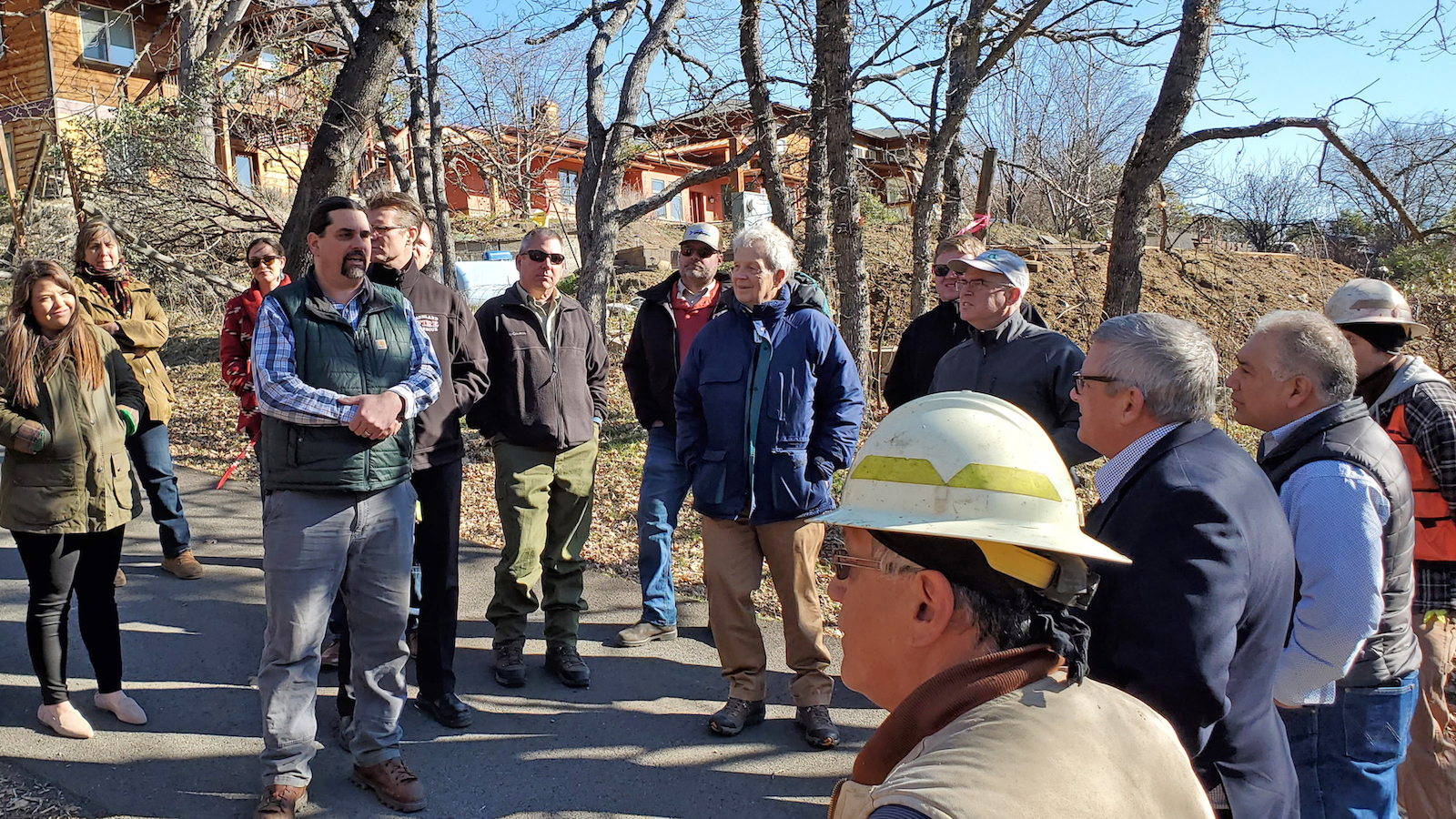
Bey started the Lomakatsi Restoration Project in 1995. Today, the nonprofit, along with the Forest Service, handles the boots-on-the-ground work of Ashland’s forest management plan.
Bey didn’t expect it when he started Lomakatsi, but these days he barely ever gets out into the forest. As communities across the American West scramble to figure out how to coexist with forests in the face of more severe wildfires, Bey is increasingly spending his time in meetings. Sure, he acknowledged, these meetings can be frustrating. And it can feel like a waste of time when it seems like the world is burning down. But, he insisted, they are necessary.
Without those endless conversations, he said, Ashland would never have had prescribed fires burning annually. It never would have sent 14 million board feet of timber down the road to local mills. All in the name of forest conservation.
“Before community conversation, you had lawsuits,” he said. “You had no management happening. You had complete polarization. Even spending a couple of years in meetings and planning is a short-term investment for a long-term yield.”

On a warm morning last April, some 30 people clad in yellow Nomex fire-retardant clothing fanned out along a ridgeline above Ashland, shepherding a crackling line of fire over the forest floor. Four fire trucks stood ready to quench the flames, and a drone searched for signs of trouble from above. Wispy white cedar-scented smoke rose through the branches. The fire would pass over some 15 acres that day.
Crews monitor a controlled burn in the Ashland Creek watershed. Photos courtesy of Lomakatsi Restoration Project
Since 2010, the partners carrying out Ashland’s plan — working under the umbrella of the Ashland Forest Resiliency Stewardship Project — have thinned trees and brush from nearly 15,000 acres and conducted controlled burns on 1,500 acres. There’s a lot more work that could be done on private land, and the community is beginning to grapple with the question of whether they need to tend to the higher altitude forests as well, Chambers said. But aside from the regular maintenance that will continue in perpetuity, the bulk of the planned restoration is complete.
Instead of taking the big trees that turn a profit at lumber mills, workers restoring Ashland’s forests felled the smaller trees that provide a ladder for fire to climb from the ground to the canopy. That’s increased the average trunk diameter in the watershed from 14 inches to somewhere between 16 and 19 inches.
While a few fires have come near Ashland in recent years, none have gotten close enough to truly test the work in the watershed. There are, however, lots of examples of big burns raging along the edges of areas under similar management, and then settling to the ground, as if tamed by the preparations. This year, scientists watched as that exact sequence of events happened with eastern Oregon’s Bootleg Fire. One study suggests that the thinning and burning in the Ashland watershed has reduced the potential for a fire to rise into the tree canopy by 70 percent.
Residents are enthusiastic about the work. Mark Shibley, a sociologist at Southern Oregon University in Ashland, surveyed people as felling was starting, and again in 2019. As people saw the state of the forest, support for controlled burning rose from 52 percent to 76 percent, while support for thinning rose from 58 percent to 80 percent.
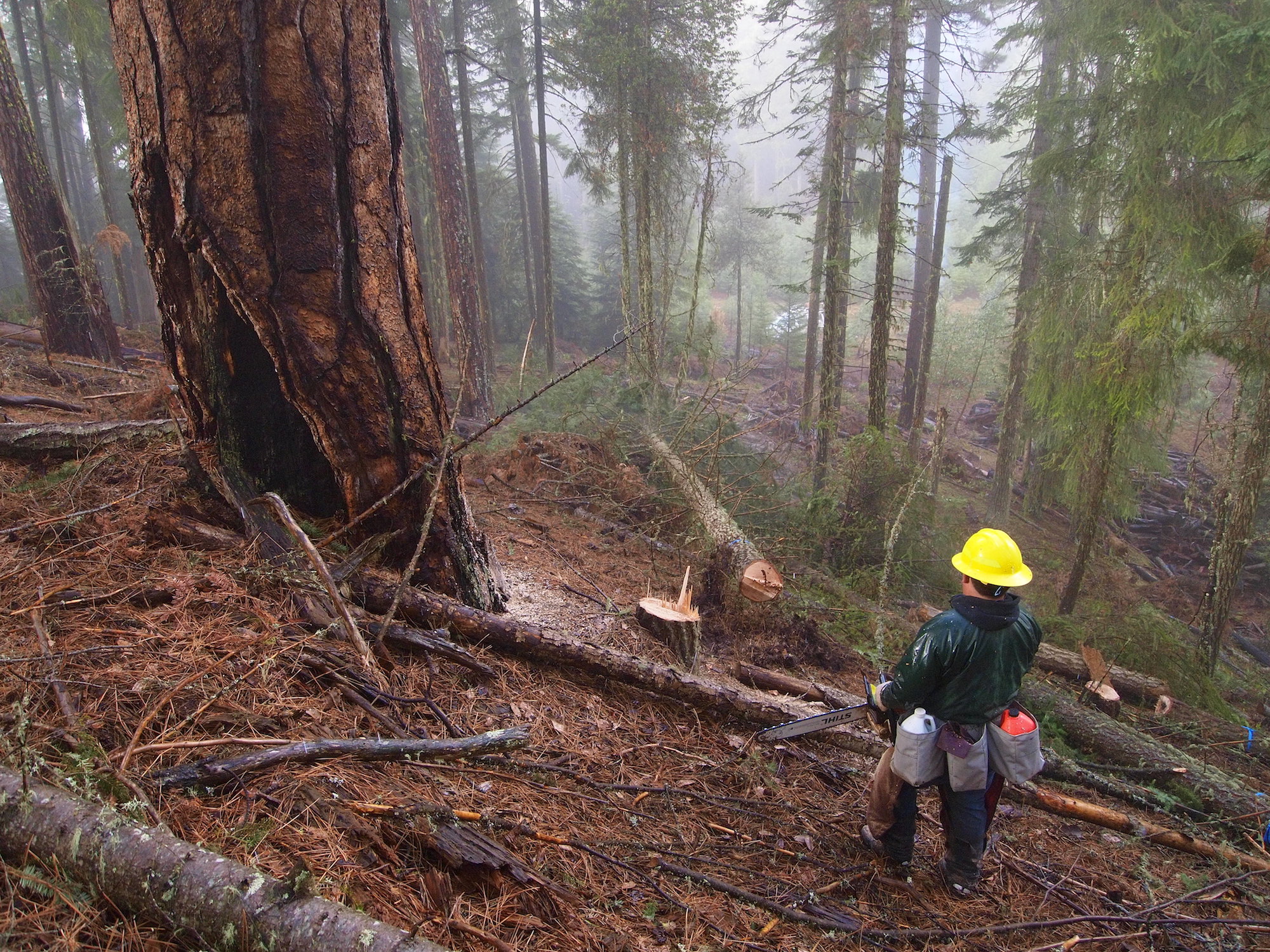
The cheering isn’t universal, of course. Dominick DellaSala, a forest scientist who lives just north of Ashland, is well known for his minority perspective that forests are better off with little or no management. In his view, the Ashland Forest Resiliency Stewardship Project is degrading spotted owl habitat, and he says the work will do nothing to protect the town from fire, since all the management takes place away from homes and buildings: “What you do beyond 100 feet of a structure has no effect at all. Whatever you are doing in the backcountry is not helping the house.”
Because the plan called for workers to take out small trees and leave the big ones, the thinning was strictly noncommercial on 80 percent of the project’s acres. But Ashland did recoup a little money by selling trees that workers did cut down. Some 3,000 trucks piled with logs have left Ashland’s surrounding forests headed for area sawmills, yielding enough lumber to build over a thousand homes. The project made $6 million off those logs — just a drop in the bucket compared to the costs.
Ultimately, the project worked because the Forest Service was willing to give up its idea that each project should pay for itself, and allow the Ashland watershed restoration to lose millions. “It’s proof that you can get productive work done in a very challenging environment,” Chambers, the wildfire chief, said. “But it’s not a great example in as far as money goes: It is a really expensive project.”
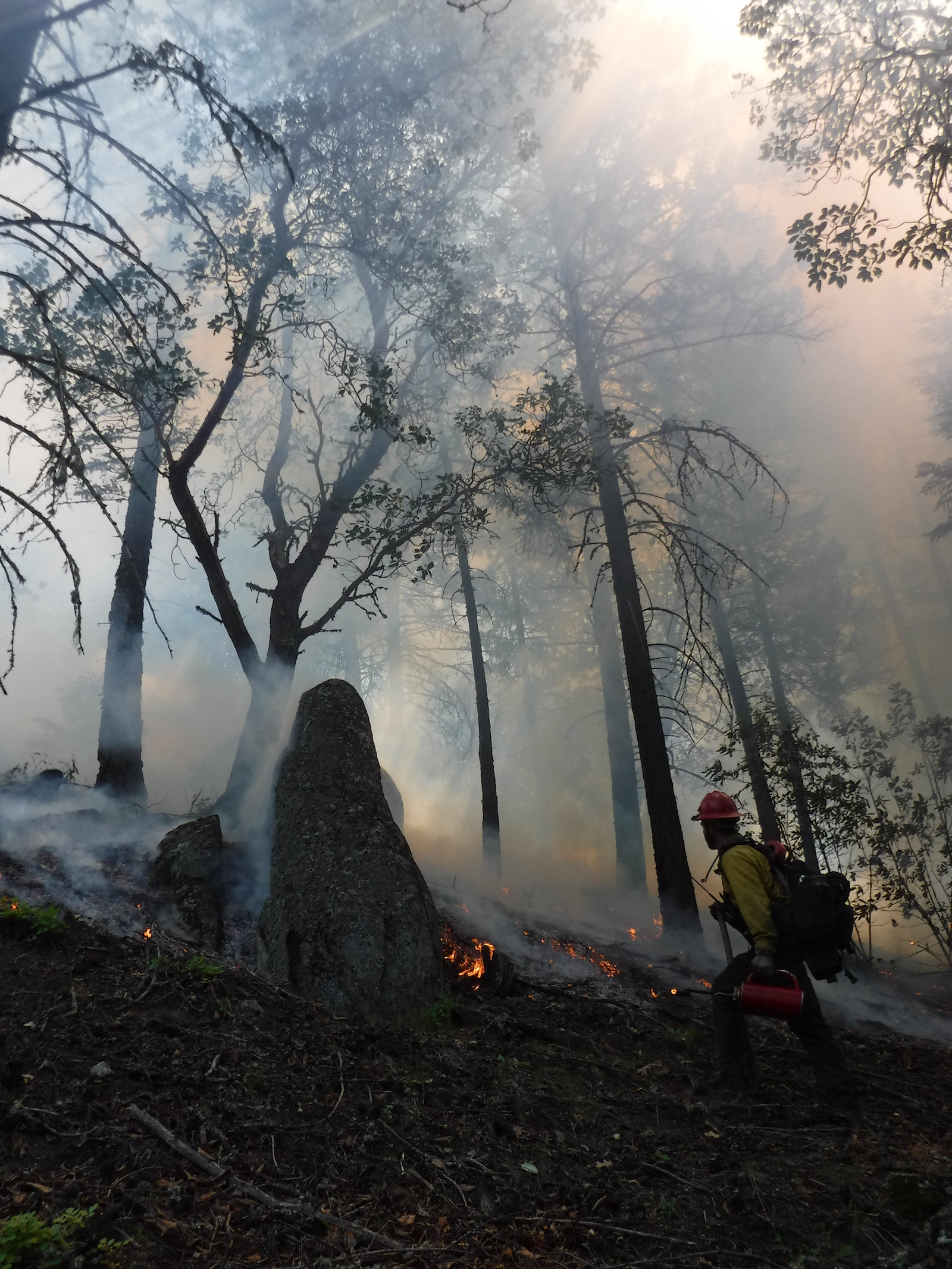
The project received some $28 million dollars in grants, the bulk from the federal government, though the state, tribes, nonprofits, and philanthropies also contribute. In 2013, Ashland voted to add a couple of dollars to every water bill, adding up to $200,000 every year, to pay for managing the watershed. A lot of money was needed upfront for cutting trees and brush, but as the years go on, Chambers said, the work will shift mostly to controlled burns as maintenance.
It’s a steep price tag, but perhaps not so steep when considered next to the country’s yearly $2 billion wildfire-fighting bill, the hundreds of billions of lost property, or the incalculable public health costs of heavy smoke exposure.
“There has been a sea change in society’s readiness to figure out and do the right thing to make forests more resilient and safer,” said Borgias of The Nature Conservancy. “We are on the cusp, and I believe the Ashland Forest Resiliency Project has defined the way forward for this reorientation.”
*Correction: This story initially misstated the total amount of wood sold to mills as a byproduct of ecological thinning in the Ashland watershed. The total is 14 million board feet, not 14,000 as originally stated.
